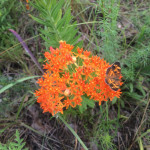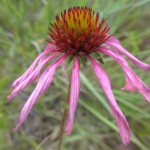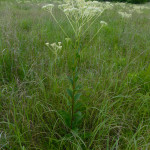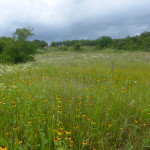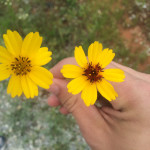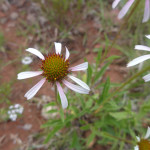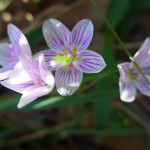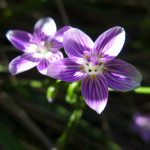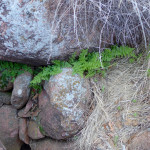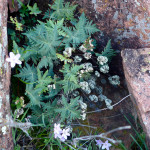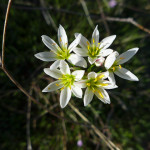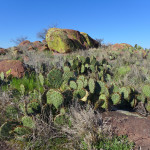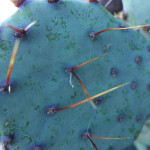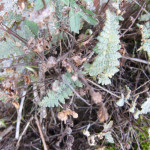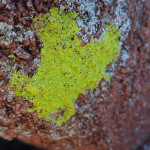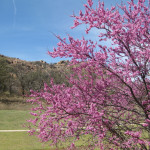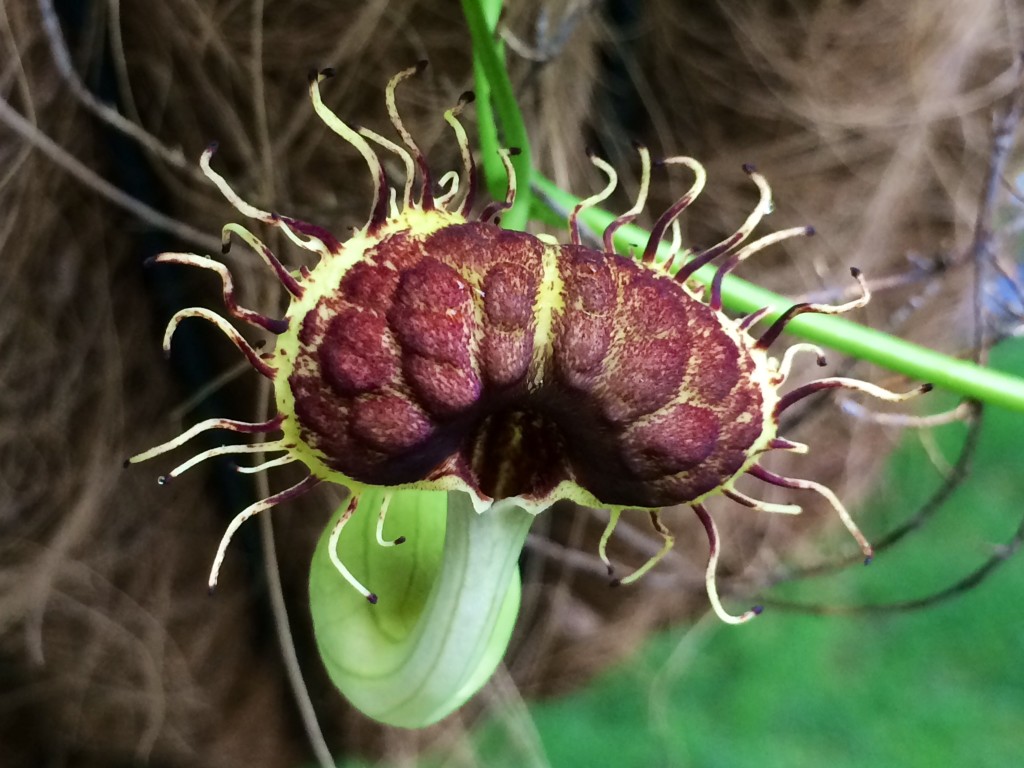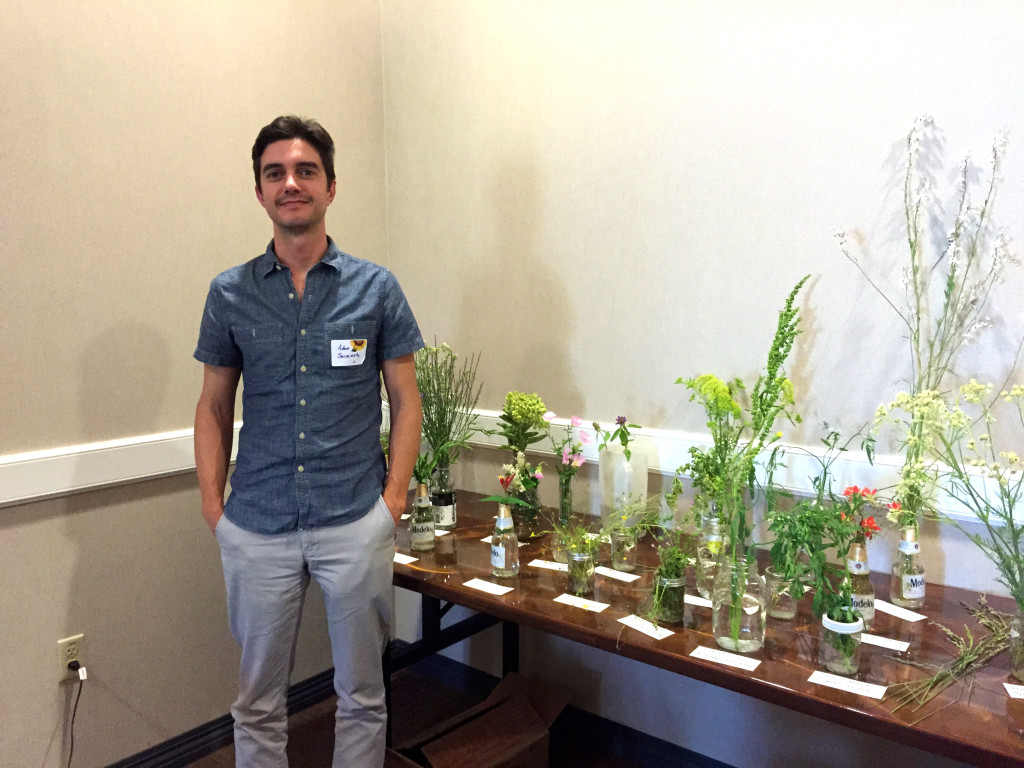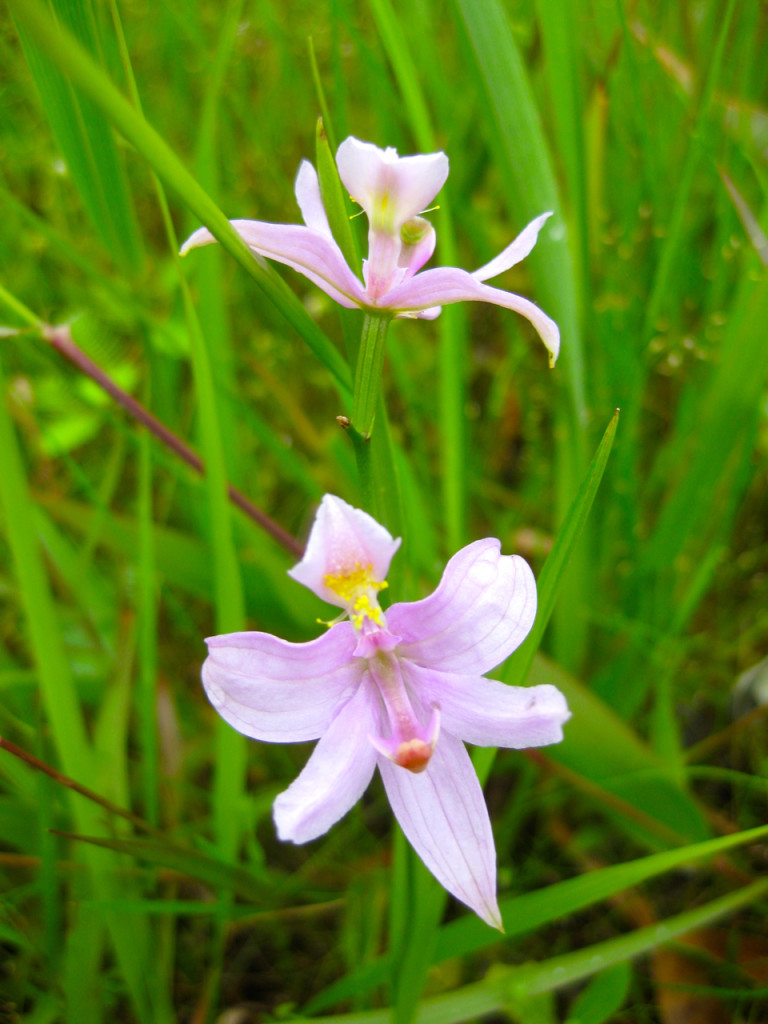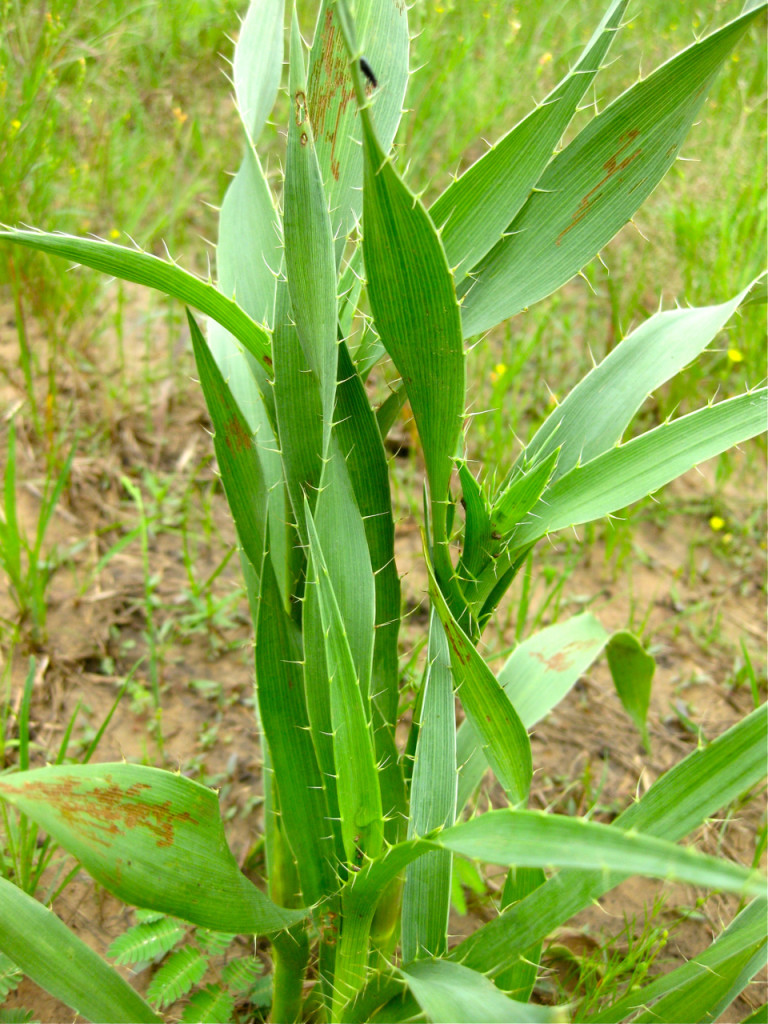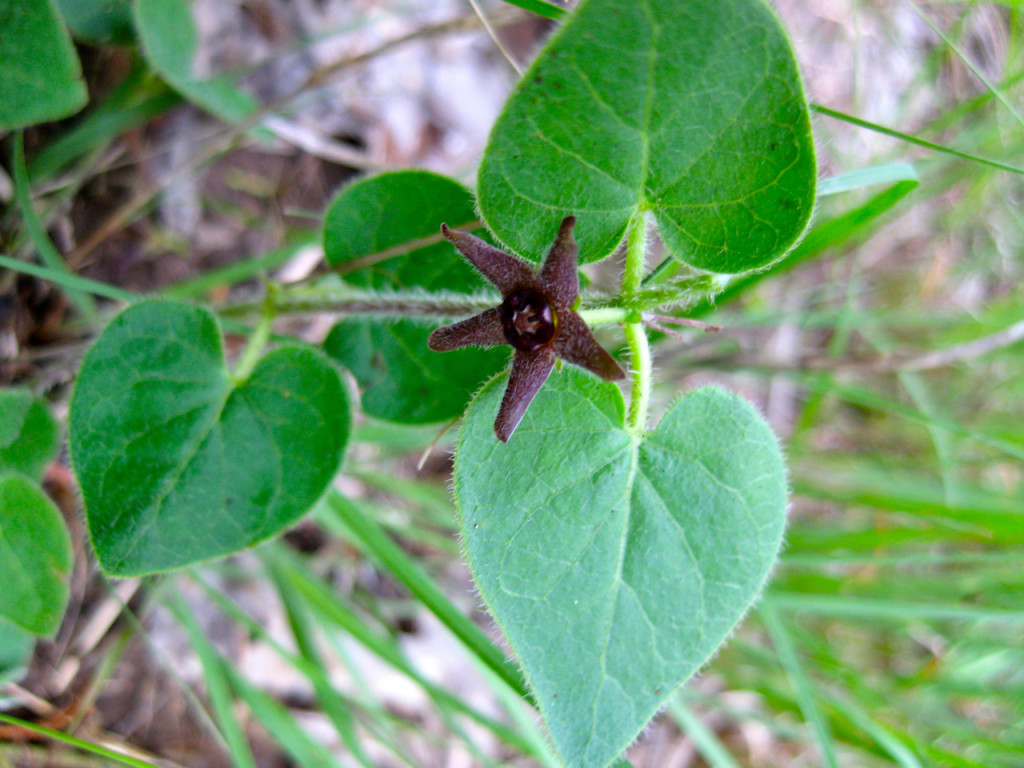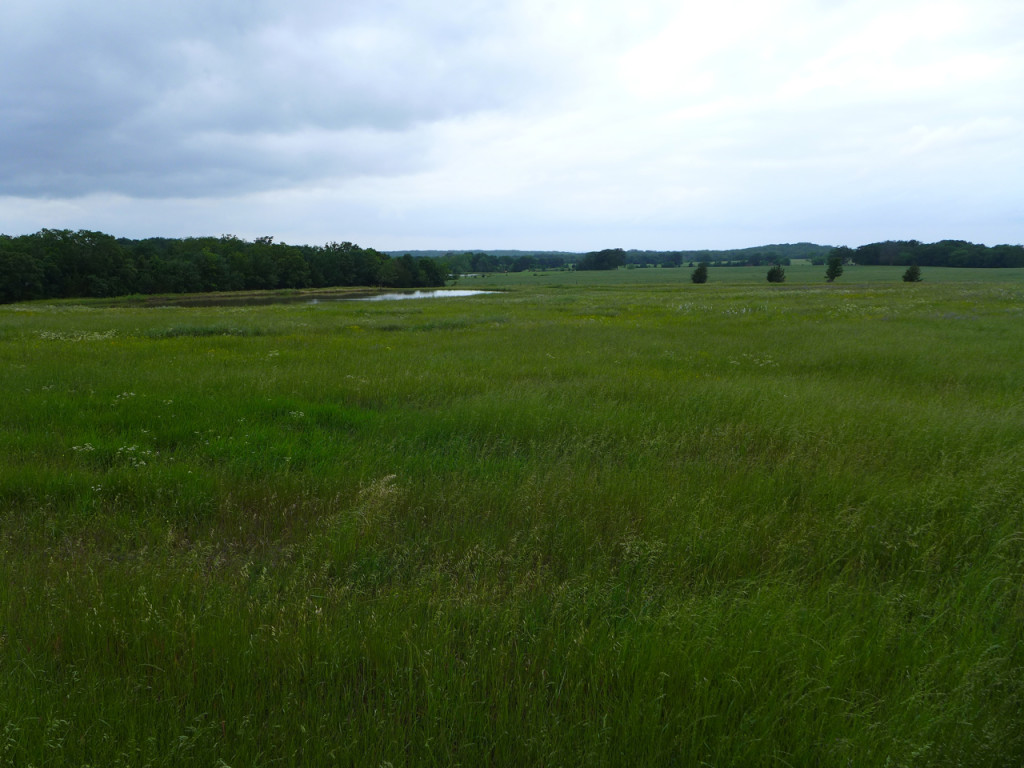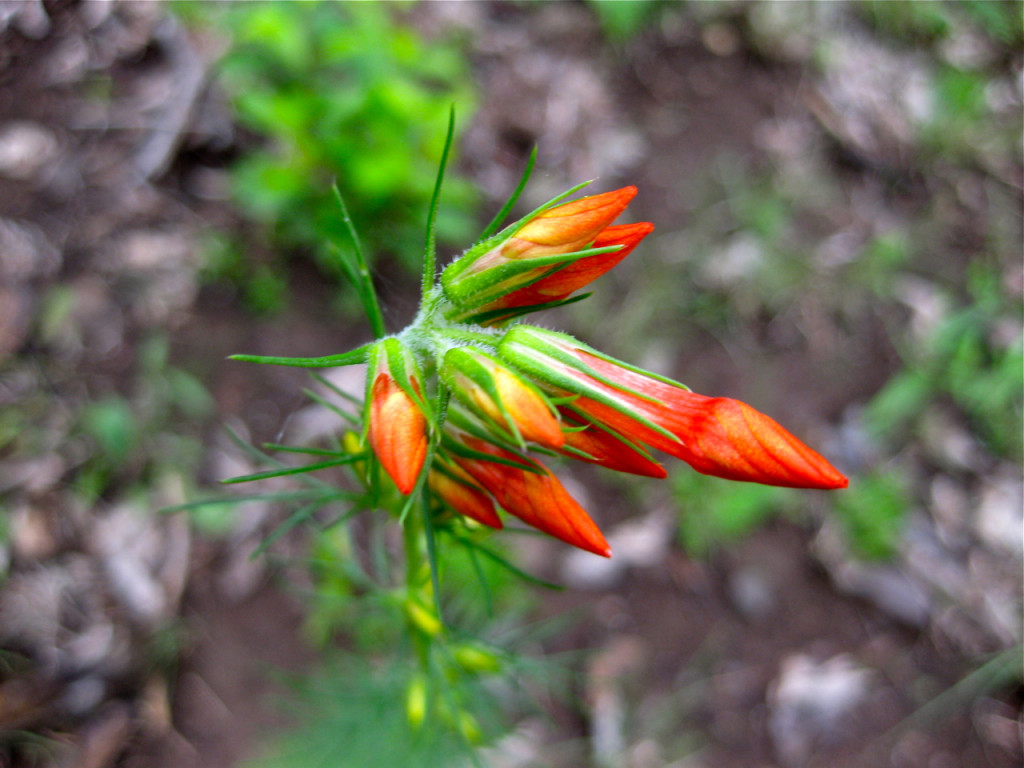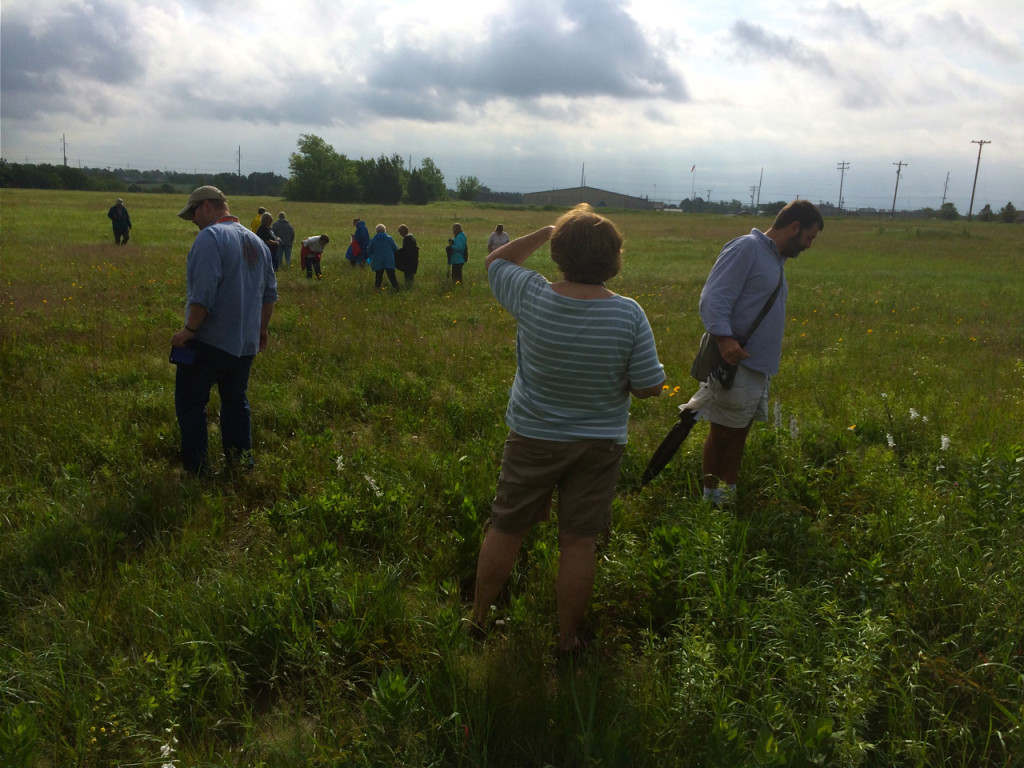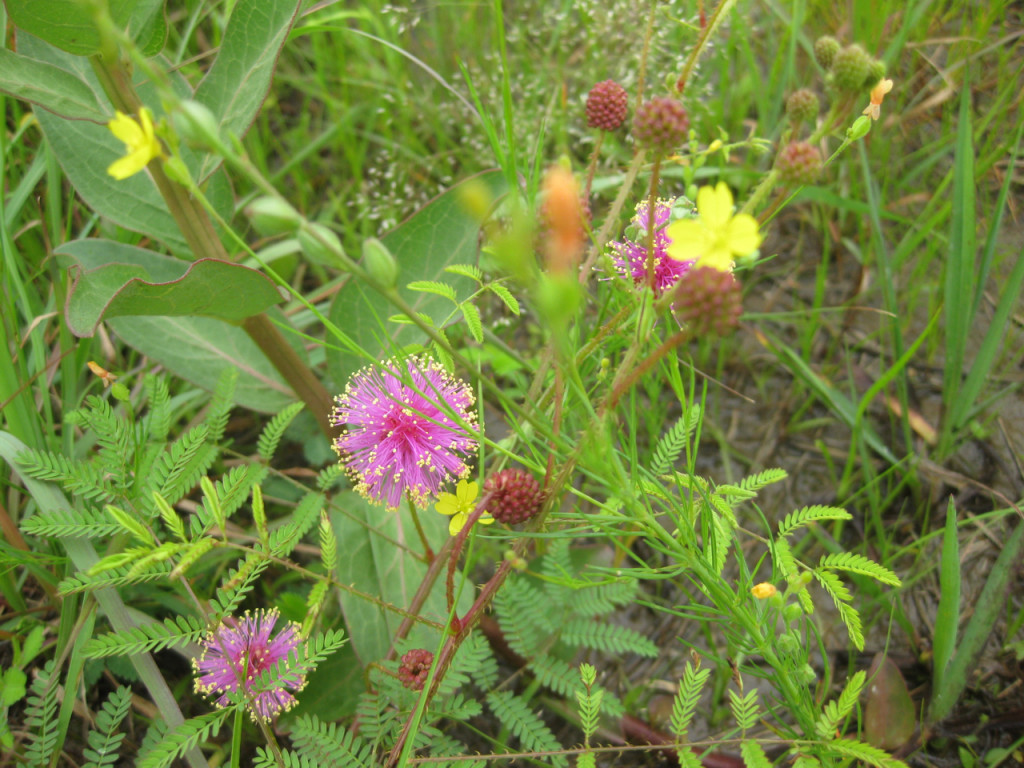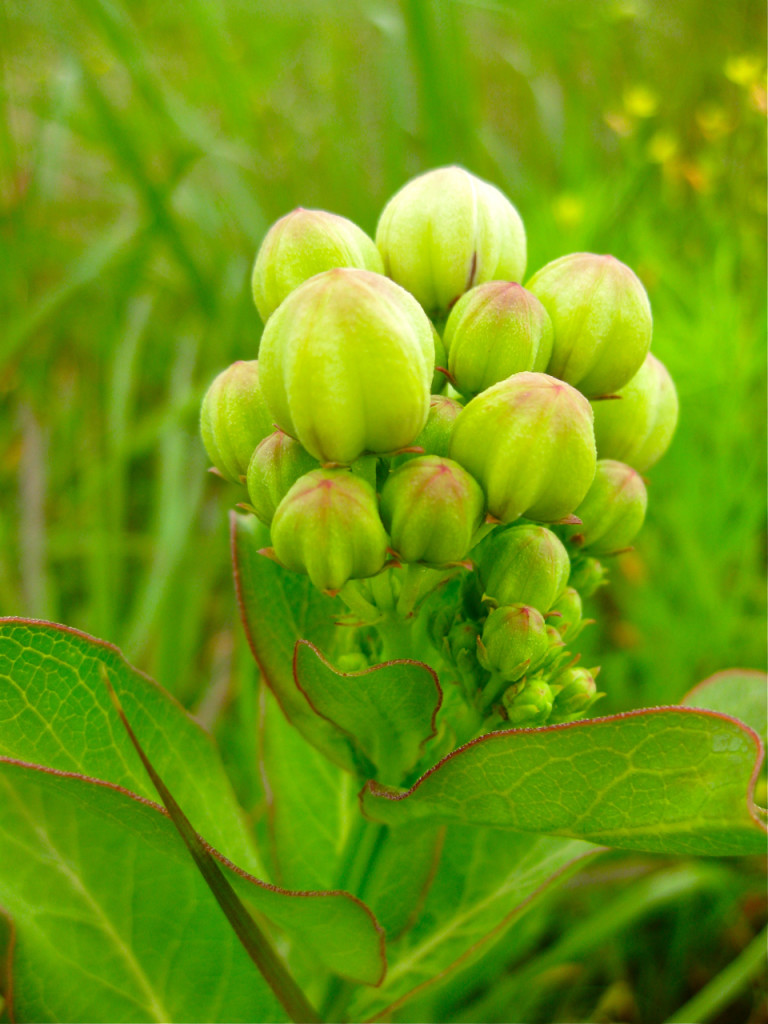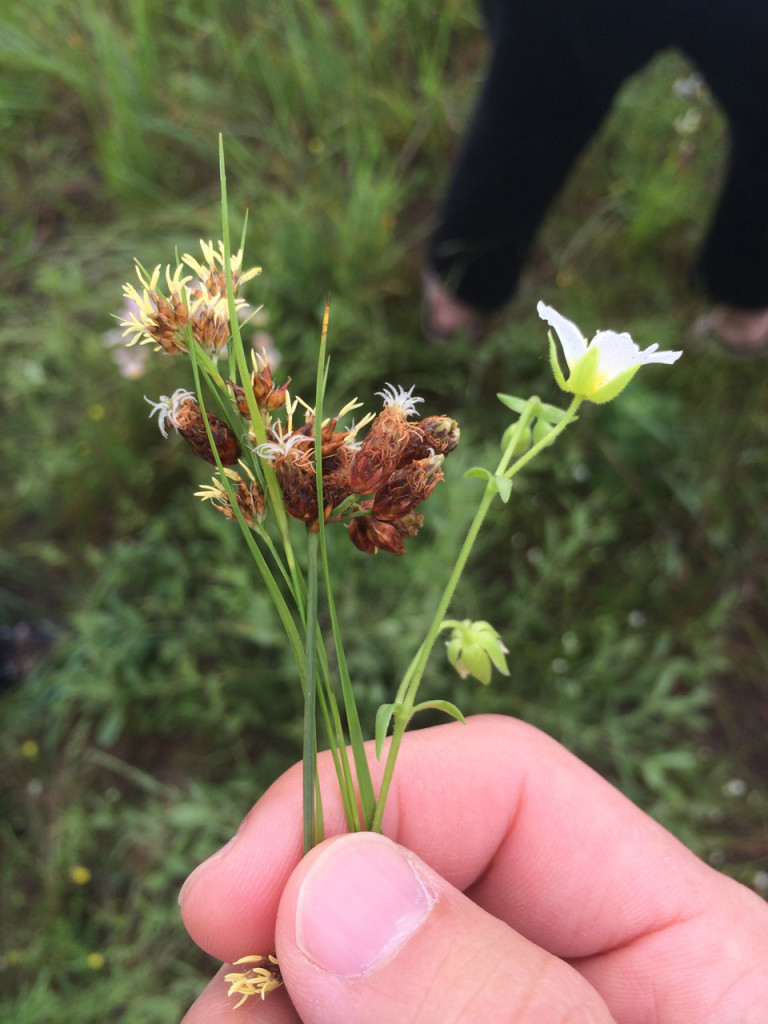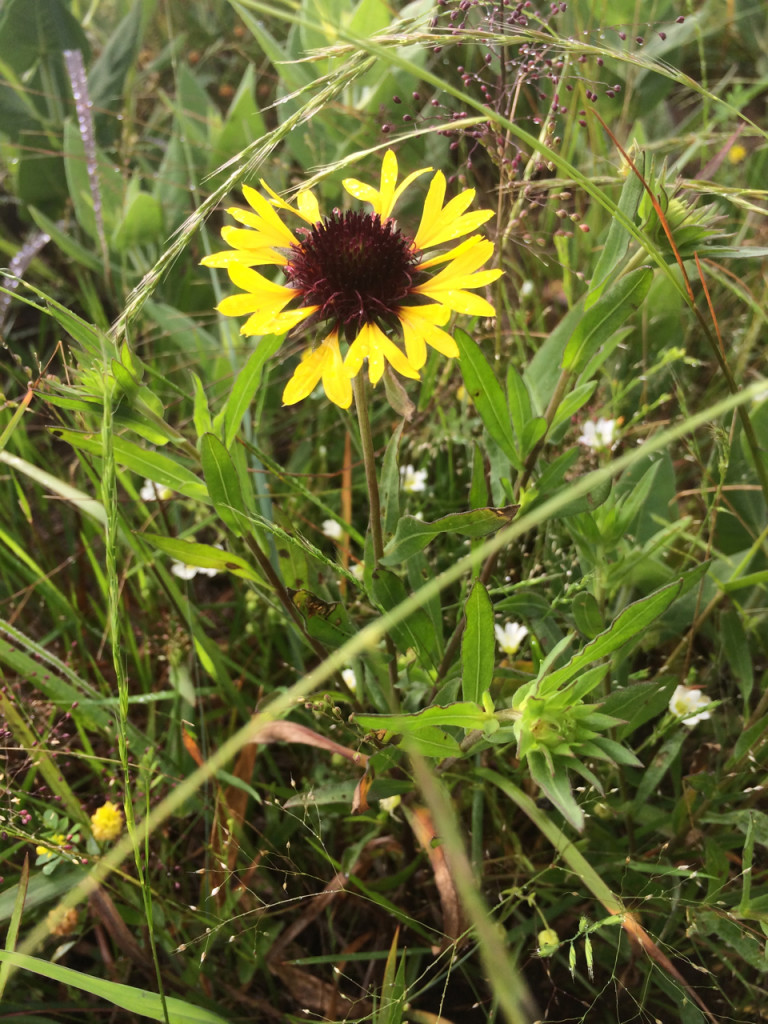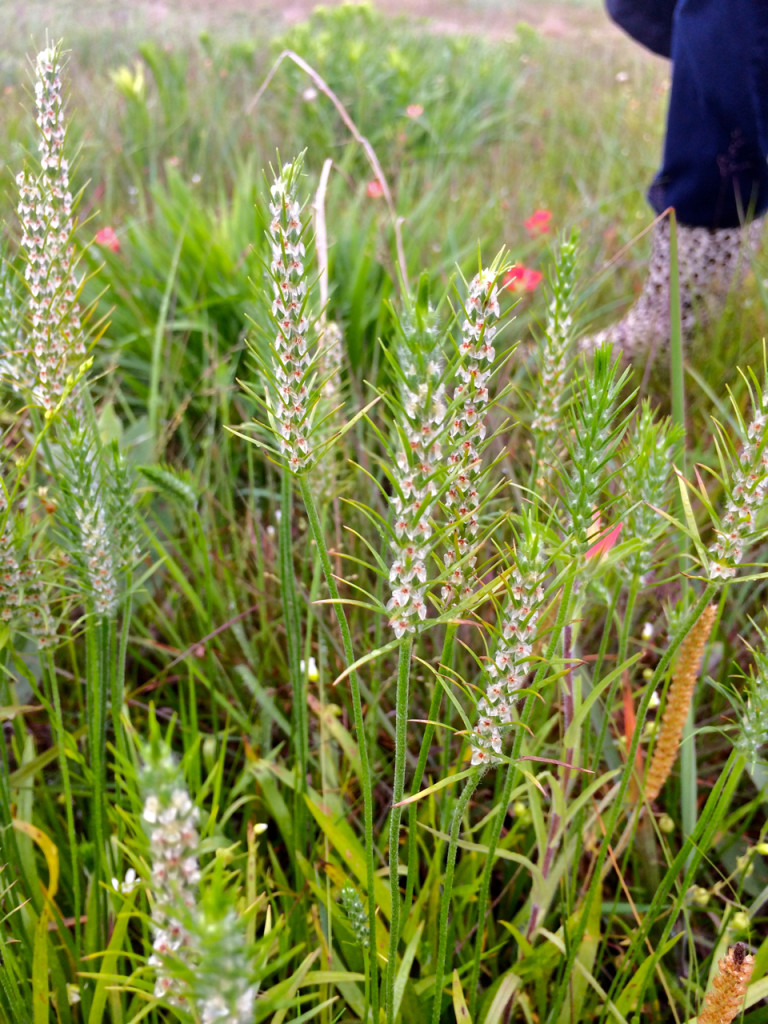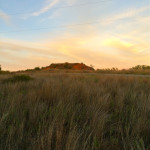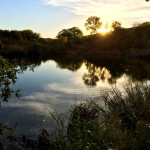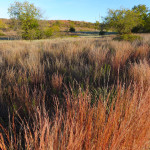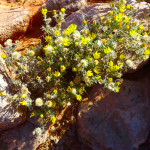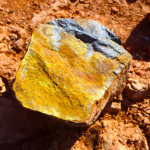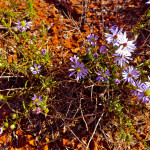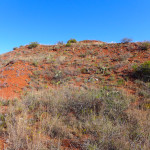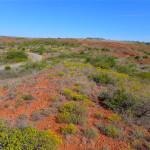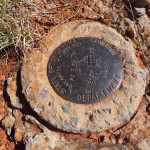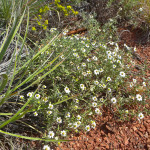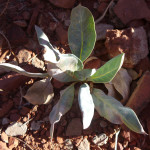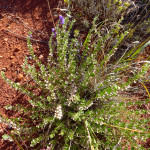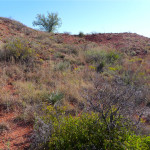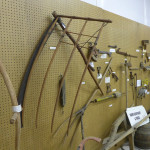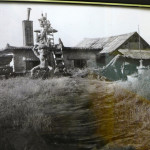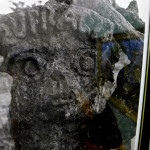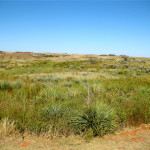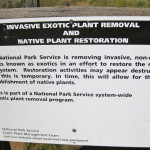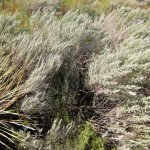Back in early June, the Central Chapter of the Oklahoma Native Plant Society took a field trip to the Lexington Wildlife Management Area. With almost 10,000 acres of “natural” areas, this place is a potential treasure for native plant enthusiasts. As a landscape designer in Cleveland county, I’m always on the look out for under utilized plants that do well right here in my neck of the woods. I was glad to explore some place a bit on the fringe of my region. The most interesting areas we found were the prairies that were mainly along the roads. Two of my favorite finds were two “Texas” plants that also make their home here: Bouteloua rigidiseta (Texas Grama) and Nassella leucotricha (Texas Winter Grass). The latter of the two is not documented as growing in Cleveland county. Always cool to find things not listed. Toward the end of our visit we were blessed with a lovely early Summer thunderstorm. The clouds made for a fantastic backdrop and the rain was just right for cooling the small band of intrepid botanical explorers as we headed back to our caravan (and no one was struck by lighting!). In our short trip we barely scratched the surface of what this place may have. We will certainly be going back!
- Asclepias tuberosa with visitor
- Oenothera speciosa white variant with visitor
- Echinacea angustifolia
- Indian Plantain field
- Arnoglossum plantagineum (Indian Plantain)
- Dracopis amplexicaulis (Clasping Coneflower) field
- Nassela leucotricha seeds
- Tale of two greenthreads
- Whitish variant of E. angustifolia

